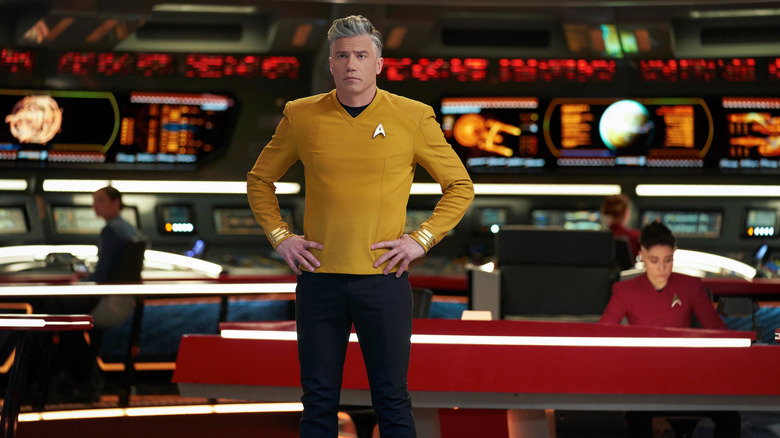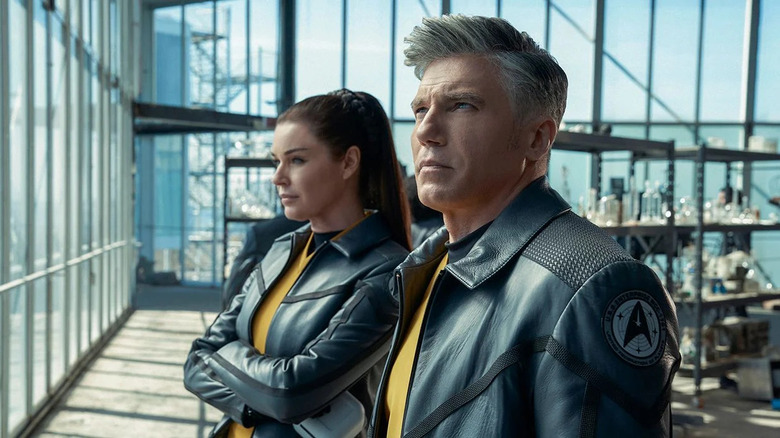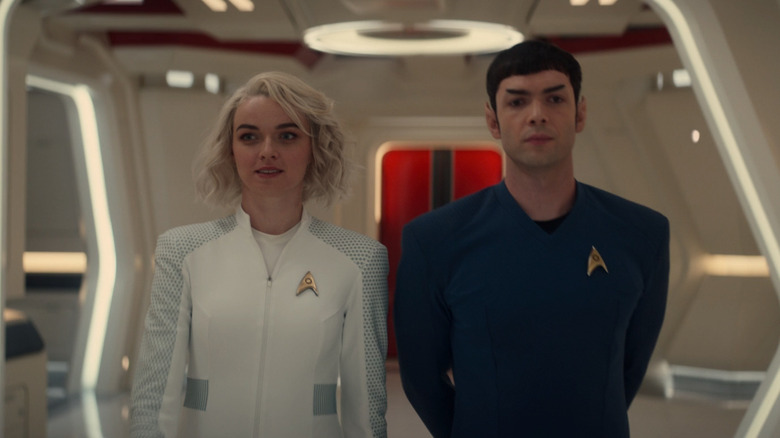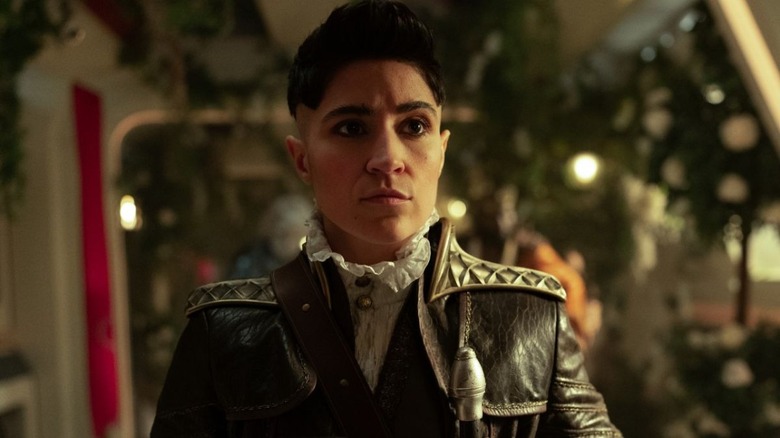Star Trek: Strange New Worlds Is So Good It Makes Me Want A 26-Episode Season
When "Star Trek" was in its heyday, most major television series had 26-episode seasons. The first season of "Star Trek: The Original Series" had a few more, but most "Trek" shows had a couple dozen episodes in each of their seasons to deliver us from Earth and into the far reaches of space. In the era of prestige television and streaming, the average season order is somewhere between 8 and 12 episodes, and that's just not enough time for a good "Trek" series. I'm not going to knock down the doors at Paramount to try and see 26 episodes of "Star Trek: Discovery" or "Star Trek: Picard" in large part because they are telling such complicated, interconnected stories that would grow tiresome after more than a dozen episodes. "Star Trek: Strange New Worlds," however, is a throwback in every way, and could easily maintain a 26-episode season.
One of the things that feels so refreshing about "Strange New Worlds" is that each episode is wrapped up fairly neatly by the time the credits roll, something that classic "Star Trek" did beautifully. Each episode is mostly self-contained, and while there are plot threads and character arcs that connect the episodes, each hour is allowed to be its own unique thing. This opens up the world for storytellers who no longer have to worry about the overarching season plot or connecting the episode to much else, instead focusing on telling a really great science fiction story in just under an hour. The first season of "Star Trek: Strange New Worlds" is pure joy to classic "Trek" fans who longed for the days of going on random space adventures and learning about the galaxy and ourselves, and by golly, it deserves a 26-episode season.
Filler episodes can be fun
Having more episodes means that some of them will inevitably be "filler episodes," which /Film writer Valerie Ettenhoffer already defended beautifully regarding "Star Trek: Strange New Worlds." Two of the best episodes from season 1 of the series could easily be called filler episodes; one is a shore leave episode with a body-switch like "Freaky Friday," while the other uses a high fantasy setting to help a main character deal with loss. Both are completely outside of any overarching plots and exist purely for character-driven reasons, making them ultimately more relatable and a lot of fun.
The cast on "Strange New Worlds" has killer chemistry that make them feel like a real crew, working together day-in and day-out and sharing very convincing camaraderie. Sometimes the best part of "Star Trek" is the fact that the people having these space adventures are mostly friends, and their love for one another helps us as an audience feel more attached. Character-driven episodes can be some of the series' best, and "Strange New Worlds" has made almost all of its season 1 episodes completely character-driven, so a 26-episode season would give more opportunities for them to explore each characters' unique potential.
A balance of tones and potential two-parters
There are some plot threads that run throughout season 1 of "Strange New Worlds," connecting the episodes without making them required viewing to enjoy. There's a stellar mix of episodic, self-contained storytelling and creating a continuing narrative that is sorely missing from the other new "Trek" series. The stakes can be as high as some of the universe-ending madness on "Star Trek: Discovery" or as personal as the ones on "Star Trek: Picard," but the serialization and need for cliffhangers and season long arcs is gone, replaced by tightly-edited, carefully crafted storytelling.
Co-showrunner Henry Alonso Myers was heavily inspired by both the original series and "Star Trek: Deep Space Nine" while creating "Strange New Worlds." Both "TOS" and "DS9" are well-loved by "Trek" fans for their approach to more character-driven storytelling and a willingness to get silly in order to balance some of the darker episodes. For every depressing allegory-based episode about war or trauma, there's a holodeck or shore leave episode to remind us that "Star Trek" can be fun, too. While "Strange New Worlds" balances these elements well, a 26-episode season would give them the ability to really explore different kinds of episodes, with a lot more room for experimentation.
A 26-episode season would also give "Strange New Worlds" the chance to occasionally do longer-form storytelling with two or three-part episodes, which can be a lot of fun in "Star Trek" if they're not overused. Some of the best episodes in the series have been two-parters, and that's almost impossible to do in a 10-episode season without making some big sacrifices.
Look, I just want more
"Star Trek: Strange New Worlds" is the first time I've been truly excited about new "Star Trek" in a long time. While "Star Trek: Lower Decks" is a lot of fun and occasionally digs into some of the more serious stuff that makes "Star Trek" great, it's still a half-hour animated workplace comedy that just happens to be in the "Trek" universe. "Strange New Worlds" makes me feel like a little kid again, staying up past my bedtime to watch new episodes of "Star Trek: The Next Generation" or "Deep Space Nine" with my parents. It feels like both a homecoming and a fresh path forward, because it's ultimately very accessible to new fans while still being loyal to the old. There's something for everyone in season 1, and it encapsulates everything there is to love about "Star Trek" in only 10 episodes. Just imagine what they could do with 26. The potential is incredible, and the cast and creators have proven that they're more than capable enough to steer this ship.
For the past 10 weeks, I've looked forward to Thursday nights when my husband and I can sit down and watch the new episode together. Sometimes we laugh, sometimes I cry, he almost always predicts at least one plot twist, but it feels like "Star Trek." I'm thrilled that we have "Strange New Worlds," but darn it, I want more.
Season 1 of "Star Trek: Strange New Worlds" is streaming on Paramount+.



